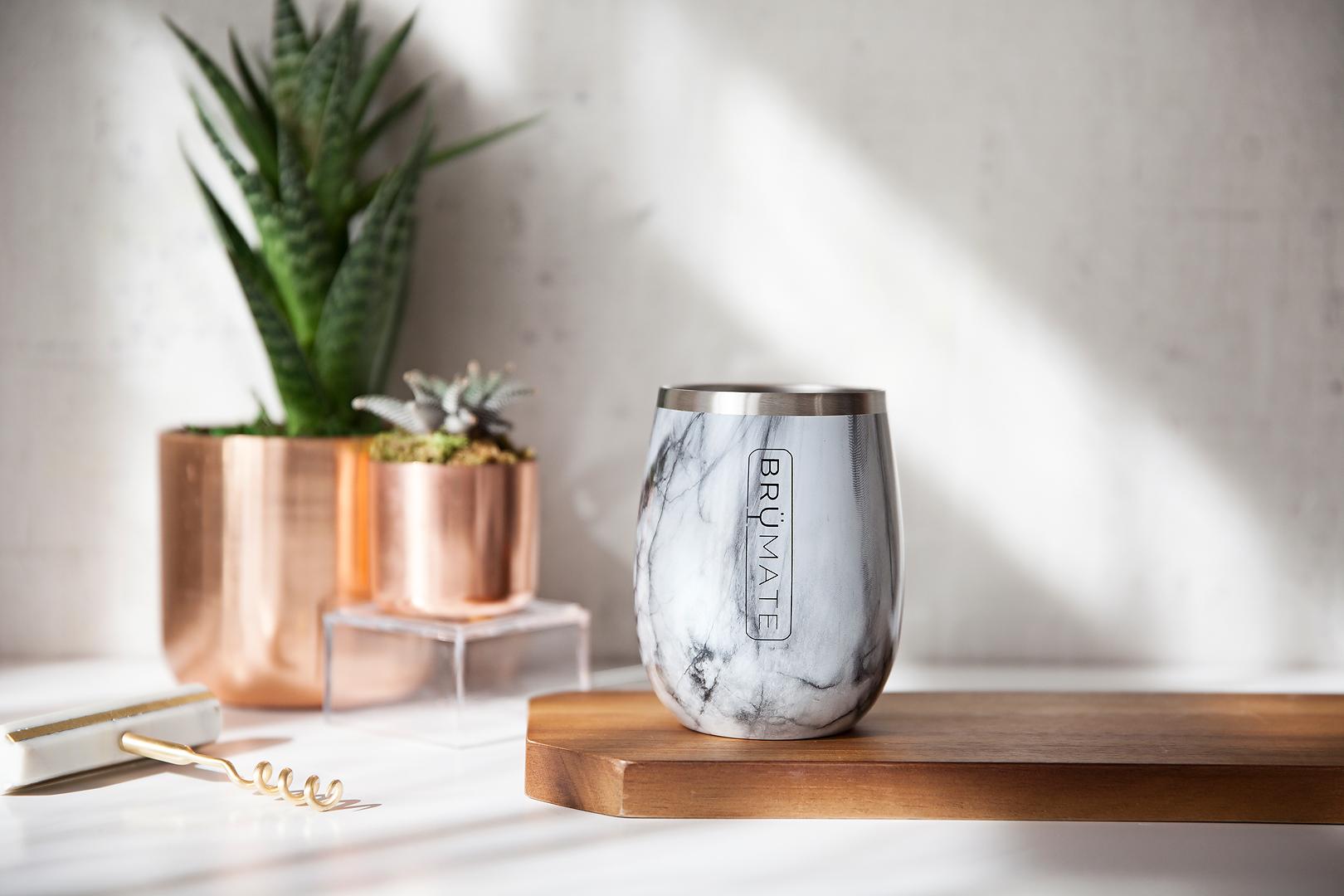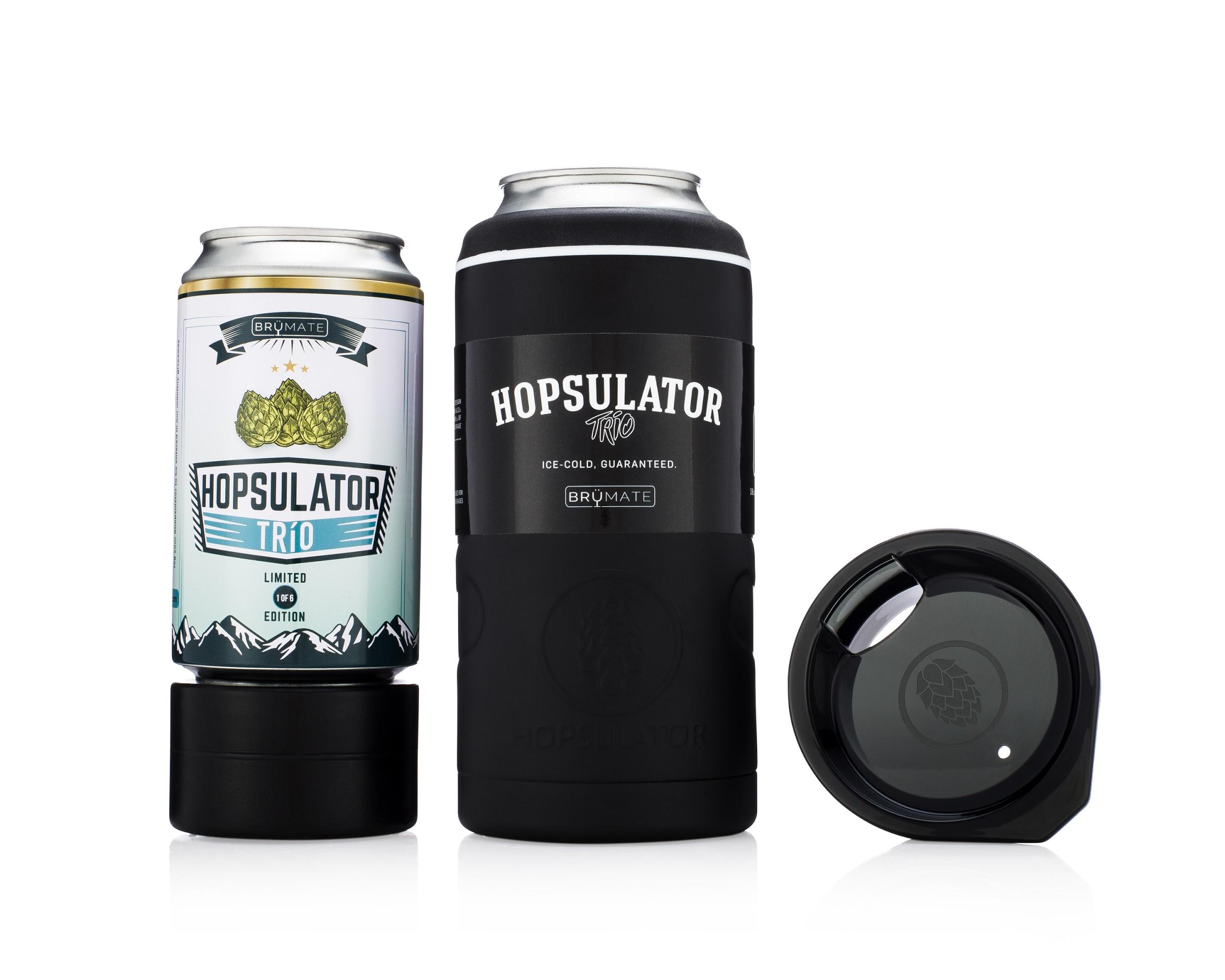Discover the essential tools and resources recommended to scale drinkware brand
| About | Details |
|---|---|
| Founder | Dylan Jacob |
| Company | BrüMate |
| Revenue | $12M/month |
| Location | Denver, Colorado, USA |
| Employees | 57 |
| Launched | January 2016 |
About the Founder and the Brand
Dylan Jacob, the visionary behind BrüMate a drinkware brand, also known as The Dehydration Company, has revolutionized the insulated drinkware market. Specializing in products for the adult beverage community, BrüMate’s innovative designs have set new standards in drinkware.

Flagship Products
Hopsulator TRiO: A 3-in-1 insulated beer koozie accommodating 16oz cans, with a freezable adapter for 12oz cans, that also serves as a pint glass. It keeps your beer chilled from the first to the last sip.
Uncork’d Wine Glasses: The world’s largest triple-insulated wine glasses that hold over half a bottle of wine.
Winesulator: Holds a full bottle of wine, keeping it at the perfect temperature for over 24 hours, ideal for glass-free zones.
Upcoming Releases
NOS’R: The first indestructible insulated nosing glass for whiskey.
Hopsulator Slim: An insulated beer koozie for 12oz slim cans.
Hopsulator Juggernaut: Designed for 24/25oz cans.
From its first product launch in November 2016, BrüMate has experienced phenomenal growth, achieving $250,000 in sales in the first two months, $2.1M in 2017, and now surpassing $1.1M per month in sales. With distribution in over 1,000 retailers nationwide, the company is on track to reach $20M this year.
The Backstory and Inception of BrüMate
BrüMate a drinkware brand is Dylan’s third venture, but it’s the first where he delved into product development and design. He began his entrepreneurial journey in high school with a part supply company for repair shops and tech centers, eventually selling it in 2014. Following this, he started a high-end glass tile company during a home renovation project, which he also sold successfully.
The idea for BrüMate sparked in January 2016, after struggling to keep his 16oz beers cold. Unable to find a suitable koozie, Dylan set out to create one himself. His experience in sourcing and development from previous ventures helped, but prototyping and molding posed new challenges. Yet, perseverance paid off, leading to the birth of the Hopsulator TRiO and, ultimately, BrüMate.
Designing, Prototyping, and Manufacturing
The journey from concept to market-ready product involves rigorous design, prototyping, and manufacturing processes. Dylan’s dedication to creating high-quality, innovative products ensures that each item meets the highest standards before hitting the shelves.
Ensuring Market Demand Before Investing
Before diving into mold investments, it was crucial to confirm a market existed for the product. Starting with a rough sketch, Dylan collaborated with a local engineer to create a 3D model. The next step was sending these files to Xometry in Maryland for 3D printing. Armed with prototypes, Dylan approached local breweries using 16oz cans, securing one of Indiana’s largest breweries to carry the Hopsulator. This led to investing $3,000 in 100 rough prototypes, which were tested for customer feedback.
Continuous Iteration and Improvement
After 45 days in the store and targeted Facebook ads, pre-orders and emails flowed in, confirming market interest but revealing room for improvement. It took 13 additional prototypes and nearly a year before the final product was ready.
Launching the Winesulator
Interestingly, the Hopsulator wasn’t the first product to launch. The Winesulator, developed two months after the Hopsulator, had fewer moving parts and reached the market quicker. Running targeted Facebook ads for pre-orders and email captures in August 2016 garnered positive feedback, prompting Dylan to proceed with manufacturing without prototypes, relying on photoshopped imagery for leads. By November, a ready list of 7,000 eager customers awaited.
Sourcing and Manufacturing Insights
Dylan’s experience in sourcing made the manufacturer hunt more efficient. Discovering that import records are public via portexaminer.comallowed him to identify and visit manufacturers used by industry leaders. This method ensured selecting quality manufacturers capable of scaling with BrüMate’s growth, avoiding the pitfalls of switching manufacturers midstream.
Patenting the Hopsulator
Securing a patent was a priority. Dylan spent around $15,000 on utility and design patents for the Hopsulator. As a micro-entity, an expedite fee ensured a decision within 12 months, far quicker than the usual 4+ years.
Launching the Business and Online Store
Launching BrüMate wasn’t without its challenges. Initial assumptions about the target demographic, age range, and focus were off. Realizing the importance of creating something people actually want, Dylan shifted strategies based on real-world feedback, pivoting as needed.
Bootstrapping and Learning
Bootstrapping the venture, Dylan juggled multiple roles—designing the website on Shopify, running Facebook ads, and handling customer service. This hands-on approach continued until July 2017, emphasizing the need to ensure product-market fit before scaling.
Effective Marketing Strategies
Pre-launch, a mix of marketing tactics was explored—Kickstarter campaigns, giveaways, blogger and micro-influencer collaborations. Over time, Facebook ads and bloggers proved most effective. Spending $20-30/day on various audiences helped identify top performers. By directing these leads to a landing page and promoting the product as the perfect holiday gift, BrüMate achieved $250,000 in sales in just a few weeks.
Building a Strong Advertising Strategy
As the business grew, customer data became invaluable in refining and expanding advertising efforts. With a dedicated team of seven, daily campaigns on Facebook, Instagram, Google AdWords, Bing, Snapchat, and Pinterest have been effective.
Out of all these channels, Facebook and Instagram have proven most successful in driving traffic and conversions. Lifestyle brands can benefit greatly from these platforms, achieving profitability from day one.
Driving Conversions and Customer Engagement
- Securing Emails: A successful tactic is using Spin-a-Sale, a tool where customers spin a wheel for a discount code in exchange for their email. This method has significantly increased email subscriptions, providing a 19% chance of converting these leads into future customers. The return customer rate is over 14%, with an average order value of over $60.00.
- Ambassador Program: Recently launched, the ambassador program has grown to over 2,000 members. These ambassadors engage with ads, provide social proof, and give product feedback. Each referral they drive earns them $20, maintaining profitability while boosting recurring customer numbers.
- Conversion Optimization: Focused efforts on improving the website have led to a consistent 4% conversion rate. A/B testing and utilizing tools like HotJar to track customer interactions help optimize the user experience. Each 0.1% increase in the conversion rate translates to an extra $28,000/month in revenue.
- Retargeting: Retargeting strategies include using Dynamic Product Ads on Facebook/Instagram, Google AdWords for banner/search ads, and apps like ReCart to recover abandoned carts. Email marketing, with 250,000 subscribers, contributes to roughly 20% of monthly revenue. Providing valuable content through emails enhances customer engagement and retention.
Leveraging Amazon
Generating over $40,000/month on Amazon without advertising, this platform captures customers who prefer its convenience. Although Amazon handles customer service and shipping, first-time buyers often convert into loyal website customers, adding another layer to the sales funnel.
Current Performance and Future Plans
With gross margins averaging 59% before ad-spend, ad-spend remains the key variable. Sales figures fluctuate based on seasonal demand and advertising competitiveness, with ROAS ranging from 3.1x to 6x. The conversion rate is around 4%, with 400,000-500,000 monthly visitors and a 15% return customer rate.
Team and Operations
The team includes two full-time customer service employees, with other roles filled by freelancers and agencies. Utilizing a 3PL service called ShipMonk for order fulfillment and a remote work model reflects modern business practices.
Future Goals
Plans include launching six new products and expanding retail presence to achieve $1M+/month in retail sales, aiming for a $50M+ company by the end of next year.
Lessons Learned
Maintaining 100% control by avoiding outside investment slowed growth but ultimately ensured ownership. Cash flow and inventory issues indicate positive demand and are manageable compared to the challenges of insufficient sales.
Overcoming Challenges
Entrepreneurship is inherently challenging and requires resilience. Mistakes and wrong turns shape both the entrepreneur and the company, proving invaluable in the long run.
Building a Strong Advertising Strategy
As the business grew, customer data became invaluable in refining and expanding advertising efforts. With a dedicated team of seven, daily campaigns on Facebook, Instagram, Google AdWords, Bing, Snapchat, and Pinterest have been effective.
Embracing the Journey and Tools of the Trade
| Tools | Platforms |
|---|---|
| E-commerce | Shopify, Amazon |
| Email Marketing | Klaviyo |
| Customer Service | Zendesk |
| Reviews | Okendo |
| Social Media | Facebook, Instagram, LinkedIn, Snapchat, Pinterest |
| Productivity | Dropbox, Slack, Google Suite |
| Payments | PayPal, Shopify Payments, TransferWise, Amazon Payments |
| Analytics | Google Analytics |
| Advertising | Facebook Ads, Instagram Ads, Bing Ads, Google AdWords, Google AdSense |
| Inventory Management | DEAR Inventory |
Reflecting on the journey, it’s clear that every decision, mistake, and success has shaped the path to where the company stands today. Embracing the past’s lessons ensures continued growth and happiness both personally and professionally.
Influential Resources
While not a regular podcast listener, one standout is The Anti Startup Startup Podcast by Taylor Offer. This podcast offers a raw and honest look at entrepreneurship. Instead of traditional reading, the focus remains on experiential learning and trying things firsthand.
Advice for Aspiring Entrepreneurs
The journey of building a business is rarely a straight line. It’s essential to understand that the final product often differs vastly from the initial vision. The ability to adapt and pivot is crucial. True learning comes from hands-on experience, not just reading or listening to others’ success stories.
Practical Steps:
Gain Real Experience: Intern at a semi-successful company or start a practice business to understand the nuances of running a business.
Adapt and Pivot: Be ready to tweak and change your idea based on feedback and experiences.
Value Knowledge: Every business venture, successful or not, provides invaluable knowledge for future endeavors.
Current Hiring and Future Prospects
Currently, the company isn’t hiring full-time positions but is on the lookout for talented videographers to create unique weekly content for video ads.


